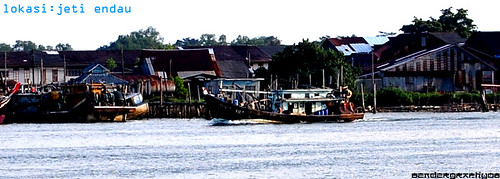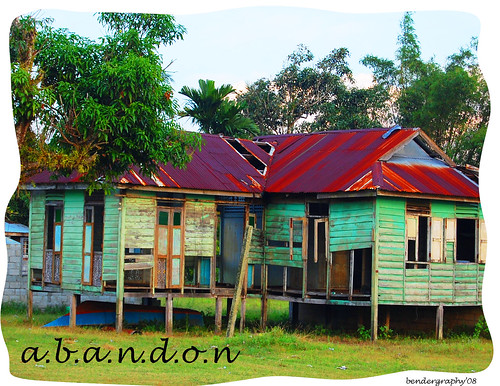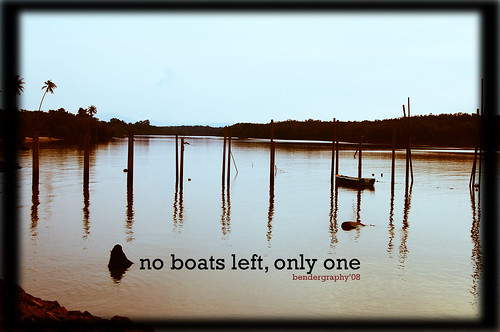Sunday, June 29, 2008
Thursday, June 19, 2008
Laws Of Photography
A. It is unlawful for any person to knowingly photograph, videotape, film, digitally record or by any other means secretly view, with or without a device, another person without that person’s consent under either of the following circumstances:
1. In a restroom, bathroom, locker room, bedroom or other location where the person has a reasonable expectation of privacy and the person is urinating, defecating, dressing, undressing, nude or involved in sexual intercourse or sexual contact.
2. In a manner that directly or indirectly captures or allows the viewing of the person’s genitalia, buttock or female breast, whether clothed or unclothed, that is not otherwise visible to the public.
B. It is unlawful to disclose, display, distribute or publish a photograph, videotape, film or digital recording made in violation of subsection A of this section without the consent or knowledge of the person depicted.
C. This section does not apply to:
1. Photographing, videotaping, filming or digitally recording for security purposes if notice of the use of photographing, videotaping, filming or digital recording equipment is clearly posted in the location and the location is one in which the person has a reasonable expectation of privacy.
2. Photographing, videotaping, filming or digitally recording by correctional officials for security reasons or in connection with the investigation of alleged misconduct of persons on the premises of a jail or prison.
3. Photographing, videotaping, filming or digitally recording by law enforcement officers pursuant to an investigation, which is otherwise lawful.
4. The use of a child monitoring device as defined in section 13-3001.
D. A violation of subsection A or B of this section is a class 5 felony.
E. Notwithstanding subsection D of this section, a violation of subsection A or B of this section that does not involve the use of a device is a class 6 felony, except that a second or subsequent violation of subsection A or B of this section that does not involve the use of a device is a class 5 felony.
F. Notwithstanding subsection D of this section, a violation of subsection B of this section is a class 4 felony if the person depicted is recognizable.
G. For the purposes of this section, “sexual contact” and “sexual intercourse” have the same meanings prescribed in section 13-1401.
FOR MORE CLICK ON LINK BELOW
http://www.photographybay.com/photography-laws/
Thursday, June 12, 2008
Wednesday, June 11, 2008
KOMPOSISI ASAS
Selain EXPOSURE(Pencahayaan) dan FOCUS yang baik,pemilihan komposisi juga memainkan peranan dalam menghasilkan imej yang berkualiti.Berikut ialah cara cara yang mudah sebelum kita menentukan komposisi.
I. FILTERING
Filtering atau dalam bahasa
Fotografi semuanya tentang komunikasi,
II. FRAMING
Mata kita merupakan Kurniaan ALLAH yang amat menakjubkan.Bila kita lihat pada OBJEK dengan sepenuhnya dan dengan itu hampir setiap benda di sekeliling kita seakan akan tidak wujud.Hanya OBJEK itu sahaja didalam Pemerhatian kita. Kamera tidak mempunyai ciri ciri sebegini. Jurugambar amatur selalunya hanya memberikan tumpuan hanya pada SUBJEK yang ingin dirakam. Ya,ia memang begitu dan langkah seterusnya yang patut diikuti ialah dengan memerhatikan keadaan sekeliling juga. Perhatikan keadaan sekeliling samada ia mempunyai hubungkait dengan SUBJEK atau tidak. Ini kerana kemungkinan elemen elemen dari luar akan memberikan impak yang lebih berkesan pada SUBJEK. Pernah hadapi situasi begini,setelah gambar yang kita rakam dicuci.”eh bila masa pulak ada orang lalu kat depan ni?” mesti pernahkan?. Ini kerana kita tidak begitu berhati hati dalam memerhatikan keadaan sekeliling. Jangan ulangi kesilapan itu.
III. BALANCE-THE ART OF COMPOSITION
Kebanyakan kursus seni dan rekacipta mengetengahkan kepentingan BALANCE(keseimbangan). Ini hanyalah sebagai panduan untuk menghasilkan gambar yang berkualiti
(a) VISUAL WEIGHT
COMPOSITION keseluruhanya ialah memastikan elemen elemen didalam imej tampak seimbang. Untuk mendapatkan keseimbangan ini,Pastikan imej yang akan dirakam itu mempunyai VISUAL WEIGHT. Perhatikan Corak,tekstur atau kecerahan yang mana akan membuatkan imej itu menjadi tumpuan. Seperti contoh; sekuntum bunga merah berlatarbelakangkan pokok hijau yang gelap.sudah tentu mata kita hanya akan tertumpu pada bunga itu. contoh ini menunjukan imej ini mempunyai VISUAL WEIGHT yang terhasil disebabkan warnanya yang kontra.
(b) BALANCING ACT
Untuk menghasilkan gambar yang seimbang, kita haruslah mengubah posisi SUBJEK itu berdasarkan VISUAL WEIGHTnya. Kita ambil contoh keadaan seperti ini ; imej yang kita rakam itu mempunyai elemen lain yang terang,dan berada di hujung FRAME. Elemen yang terang ini akan menarik mata kita untuk memandangnya. pemerhatian kita teralih dan terganggu oleh elemen ini. Dan ini dikatakan imej yang tidak seimbang. Jika kita berubah dari kedudukan asal dan merakam semula imej tersebut dan memastikan elemen yang terang itu berada di tengah,sudah tentu mata kita akan tertumpu di tengah.Ini dikatakan imej yang seimbang.
(c) TYPES OF BALANCE
1) SYMMETRICAL
Keseimbangan yang paling asas. Dimana elemen yang mempunyai VISUAL WEIGHT tadi berada di tengah tengah gambar. Elemen ini mempunyai keseimbangan yang ketara. apabila subjek berada diatas air. Maka akan terhasil imej yang nyata dan tidak nyata pada permukaan air itu dari tindakan pembiasan,Ini juga dikenali sebagai SYMMETRICAL BALANCE
2) ASYMMETRICAL
Elemen yang mempunyai VISUAL WEIGHT tadi berada di luar titik tengah.Elemen ini tidak semestinya mempunyai hubungkait dengan pembiasan cahaya.
3) RULES OF THIRD
Panduan yang berguna apabila kita ingin merakam SUBJEK yang berada di luar kawasan titik tengah. RULES OF THIRD ini juga dikenali sebagai RO3. Mempunyai 3 garis lintang dan 3 garis menegak,dimana untuk menghasilkan imej yang seimbang,kita bolehlah memastikan SUBJEK berada pada mana mana antara titik yang bersentuhan yang terhasil dari garis garis ini.
4) LEADING LINE
Deretan pokok, sungai, jalan raya, pagar, bayang bayang, tali dan bermacam macam lagi yang bersambungan. LEADING LINE ini tidak akan terhasil jika kita tidak berhati hati dalam menghasilkanya. Garisan ini seharus nya membawa kita ke SUBJEK atau dari SUBJEK. Pastikan sudut ketika merakam gambar itu sedikit kreatif dan bersesuaian. Mulakan LEADING LINE ini dari satu sudut imej akan memberikan impak yang cantik.
Belajar rajin2.. nanti update lagi.. daaaaaa
Aper topik nak share hari ni err??
Monday, June 9, 2008
ISTILAH ISTILAH KAMERA
Canon
DO: Diffractive Optics.
EF: Electro-Focus. Refers to the focus motor built into the lens that is common to all EOS-mount lenses.
EF-S: Electro-Focus Short Back Focus. Canon's new lines of lenses made specifically for small-sensor EOS digital cameras.
EOS: Electro-Optical System. Refers to Canon's series of SLR cameras that are capable of auto-focusing.
IS: Image Stabilizer
L: Luxury. Designation for Canon high-end lenses.
USM: Ultrasonic Motor. In-lens focusing motor that is super quiet and is based on electro-magnetic field to operate.
Minolta
MD: Indicates Minolta lenses that could be used on late model, manual focus Minolta SLR's for shutter priority auto-exposure. Minolta or independent service centers could upgrade most MC lenses to MD specs
Nikon
AF-I: Autofocus Internal Motor. The AF motor is in the lens, rather than in the camera body.
AF-S: Autofocus Silent Wave Motor. AF-S is similar to Canon's USM and Sigma's HSM technology. Developed to provide the same benefit to Nikon users and to compete with USM and HSM.
DC: Defocus Control.
ED: Extra-low Dispersion. Lens element to help correct chromatic aberrations.
G: Designates D-type lenses with camera controlled aperture settings only. Its benefit includes lighter and smaller lenses.
IF: Internal Focus.
Micro: Same as macro
Pentax
AL: Aspherical Lens.
ED: Extra low Dispersion. Lens element to help correct chromatic aberrations.
J: Lenses without external aperture ring; camera controlled aperture.
Sigma
Sigma provides a full descriptive list of acronyms it uses.
DC: Sigma lenses made for small-sensor digital cameras.
DF: Dual Focus.
DG: Lenses adapted to be useable on both digital and film cameras.
DL: Deluxe. Indicates Sigma low-end lenses.
EX: Excellence. Indicates Sigma high-end lenses that are marketed to the professionals.
HSM: HyperSonic Motor. HSM is similar to Canon's USM technology. Developed to provide benefit to Sigma users and to compete with USM.
HZ: Hyperzoom. Lenses with extended zoom and focusing range.
Sony
AIS: Active Interface Shoe. AIS is a 16-pin proprietary electro-mechanical hot shoe that can accept a variety of accessories, such as microphone and light. The accessories are fully powered by this interface and require no battery of its own. Due to the sophisticated interface, AIS accessories can perform a number of specialized features that non-AIS accessories cannot.
Tamron
Di: Lenses with optics designed to combat increased reflectivity of digital sensors
Tokina
ATX: Advanced Technology-Extra.
SZX: Manual focus lenses.
Tensen dgn STREAMYX....
Tips For Today
Night Photography.. Good for newbie to learn on how to capture picture without sufficient light especially at night..






